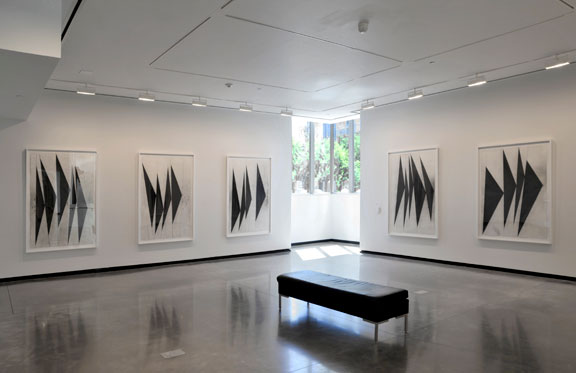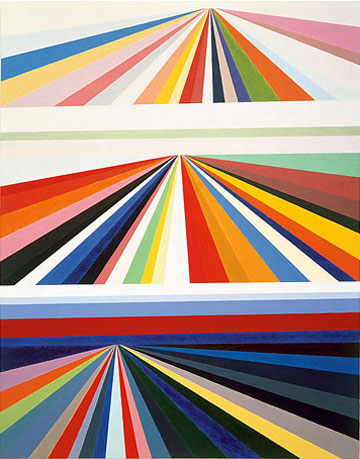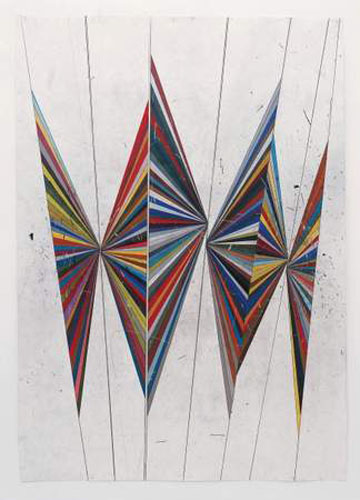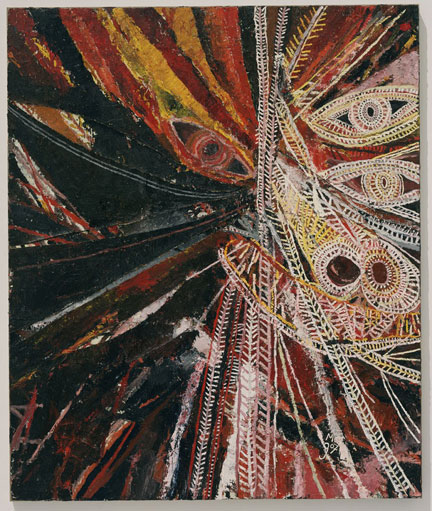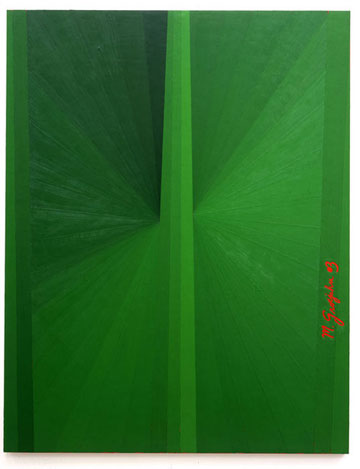
|
||
|
Portland art blog + news + exhibition reviews + galleries + contemporary northwest art
|
||
Interview with Mark Grotjahn
I was born in Pasadena, but we moved to the Bay Area when I was nine months old. In terms of museums that formulated, shaped or exposed me to art, it was SFMOMA. Having said that, I did see the first King Tut exhibition at LACMA in the '70s.
I grew up in Marin, and I'm sure being in the redwoods and fresh air was probably good for me. I played baseball.
In my late 20s, McLaughlin became important to me because he made rigorous abstractions and was the first California artist to break out and have an international career. But I read Kandinsky's Concerning the Spiritual In Art at age 15, I liked Paul Klee, and looked at my grandfather's books on Picasso. No, it is exactly the same.
Yes, I always believed that art could be whatever you wanted it to be. But actually doing an interactive, social performance or intervention showed me that that was actually a reality.
At the time I had just moved to L.A. and I had been doing conceptual performance work in the Bay Area. I opened a gallery with my friend Brent Peterson and started showing and working with other artists. That took care of a lot of my conceptual needs as well as feeling connected to a larger community. And I started to think about why I got into art in the first place. I was always interested in line and color. I wanted to find a motif that I could experiment with for awhile. I did a group of drawings over a period of six to twelve months. The drawing that I chose was one that resembled the three tier perspective, and that is what I went with. Originally I had no interest in perspective and I don't know that the work does contain those powerful ideas. I changed the focal points because it changed the composition of the works and found that it was visually interesting and worthwhile.
I had done one black dancing butterfly before this series. I looked at an image of it and thought it would be interesting to do one at a large scale. I did it, it worked and I decided then to do a series. Halfway through, I realized they would be kept together and that it would be the end of the color dancing butterflies.
Evolve over time, rarely a sketch or drawing leads to a painting.
I like the description of the eyes coming out of the jungle. I sometimes pretend the faces are baboons or monkeys. I can't say I've been influenced by African art particularly or consciously except that I've been influenced by artists who have been influenced. Picasso being the most obvious. I think you are right about the space that is created. The horizontal and vertical lines are rarely, if ever, horizontal or perpendicular to the edges of the canvas. I think it throws the works slightly off kilter. I was interested in that with the three tiered perspectives. I wanted to throw your body slightly off without making it super manipulative. The butterfly paintings not so much, and they seem to get tighter and more regimented. With this suite of black drawings the only problems I was trying to solve were visual ones. I wanted the works to move. It's why I called them "dancing butterflies". Dancing refers to music, and music to some of the abstract pioneers. Posted by Arcy Douglass on October 06, 2010 at 14:42 | Comments (0) Comments Post a comment Thanks for signing in, . Now you can comment. (sign out)
(If you haven't left a comment here before, you may need to be approved by
the site owner before your comment will appear. Until then, it won't appear
on the entry. Thanks for waiting.)
|
| s p o n s o r s |
 |
 |
 |
 |
 |
 |
 |
 |
 |
 |
 |
 |
 |
 |
 |
 |

|
Site Design: Jennifer Armbrust | • | Site Development: Philippe Blanc & Katherine Bovee | |


